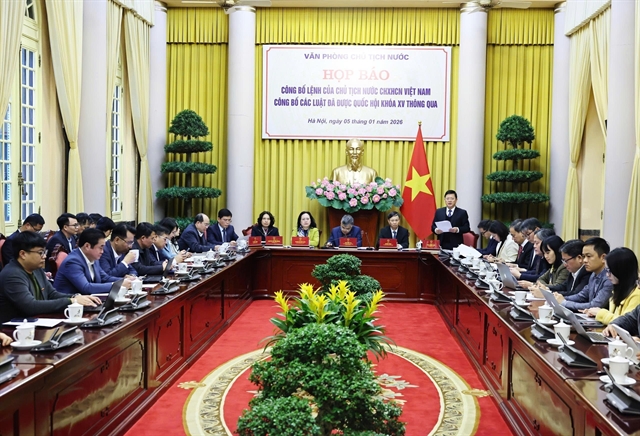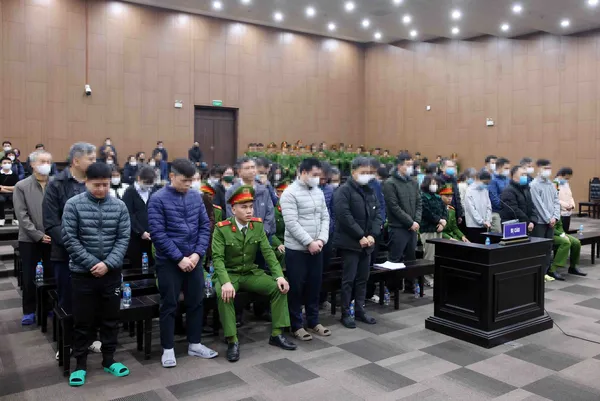 Society
Society


|
| A train crosses Hải Vân Pass in the central region of Việt Nam. — VNA/VNS Photo Văn Dũng |
HÀ NỘI — Việt Nam’s railway sector is struggling to cope with increasing challenges as it awaits a new restructuring plan.
The Việt Nam Railway Corporation (VNR) was formed in 2003 as part of the reorganisation of the Việt Nam Railway Federation.
In 2013, it implemented its restructuring plan’s Phase 1, focusing on equitisation of its member companies, particularly Hà Nội Railway Transportation and Sài Gòn Railway Transportation.
However, after being equitised, the two companies did not operate as effectively as expected, resulting in a reduced market share of the railway sector.
The railway sector in Việt Nam is now seen to be failing to compete with other ground transportation methods and airlines.
Vice head of Việt Nam Railway Authority under the Ministry of Transport Nguyễn Huy Hiền said that VNR’s current plan has faults which need to be fixed in the new one.
In 2017, the corporation proposed a new plan for the period 2016-2020.
Chairman Vũ Anh Minh said that after 41 months, the draft plan was still waiting for Government approval.
Meanwhile, last year, the Vietnam Railways Corporation suffered a record loss of VNĐ1.32 trillion (US$57.4 million) in revenue due to the COVID-19 pandemic and flooding in the central region.
Revenue last year dropped 21.7 per cent to VNĐ6.56 trillion ($284.5 million).
The railway sector was falling into a bigger crisis, Minh said, as he called for the Government to allow it to implement urgent restructuring actions this year.
VNR plan to merge the two joint stocks companies - Hà Nội Railway Transportation and Sài Gòn Railway Transportation and make full use of its available resources to reduce operation costs, then reduce transportation prices.
After the merging, VNR would focus on passenger transportation. It would establish a subsidiary operating in freight, Minh said.
The Commission for the Management of State Capital at Enterprises has also recommended merging the two companies. It also recommended establishing a Centre for Sciences, Technology and Services after re-organising VNR’s units.
The commission suggested VNR divest its capital at its 13 member companies.
According to Deputy Minister of Transport Nguyễn Ngọc Đông, over the past decade, the railway sector failed to mobilise resources for development. Meanwhile, the investment in the sector had increased slightly by VNĐ4-4.5 trillion, mainly for infrastructure maintenance and social welfare but not for development.
Đông also said it would be difficult to eliminate the problems facing the sector in a short time.
At a meeting on VNR’s restructuring plan earlier this year, Deputy Prime Minister Trương Hòa Bình said that the corporation must focus on simplifying its organisation, address overlapping among sections and speed up information technology and advanced railway technology.
The corporation must increase its ability to master in making carriages, locomotives and reduce reliance on foreign supply and transportation costs, Bình said.
He also asked for an upgrade of cross-border railways to boost international transportation.
Professor and Dr Bùi Xuân Phong, chairman of Việt Nam Railway and Economy Association said that the merging of the two companies, Hà Nội Railway Transportation Station and Sài Gòn Railway Transportation, could lead to a compatible system for organisation and operation the railway from the north to the south in terms of staff and facilities like locomotives, carriages or warning systems.
“Among the factors to boost the railway sector, Government’s investment to railway infrastructure is needed first,” he said.
Professor and Dr Đặng Đình Đào, former chairman of Institution for Economic and Development Studies under National Economies University said that for a long time, the railway sector survived with few infrastructure improvements.
“Once the railway sector is striving to change, it requires a huge investment. This poses a difficulty for the Government to arrange,” he said.
In the past, Việt Nam paid more attention to develop its roads rather than railway and waterways, Đào said, adding that the imbalance in investment led to high logistic costs and reduced the country’s competitiveness.
“A plan to increase investment is needed, particularly a high-speed railway system,” Đào said, adding that elsewhere in the world, in places like Japan or China, the railway was a proven effective form of transportation. — VNS




